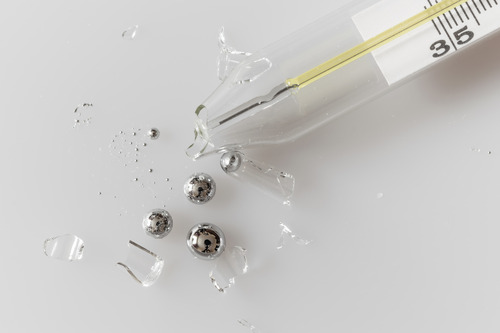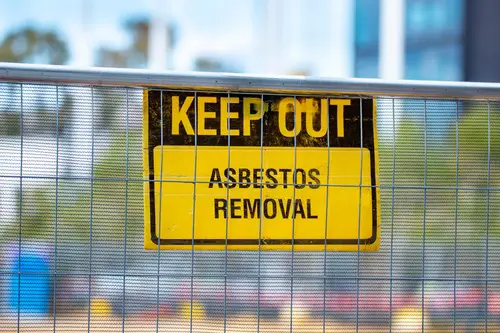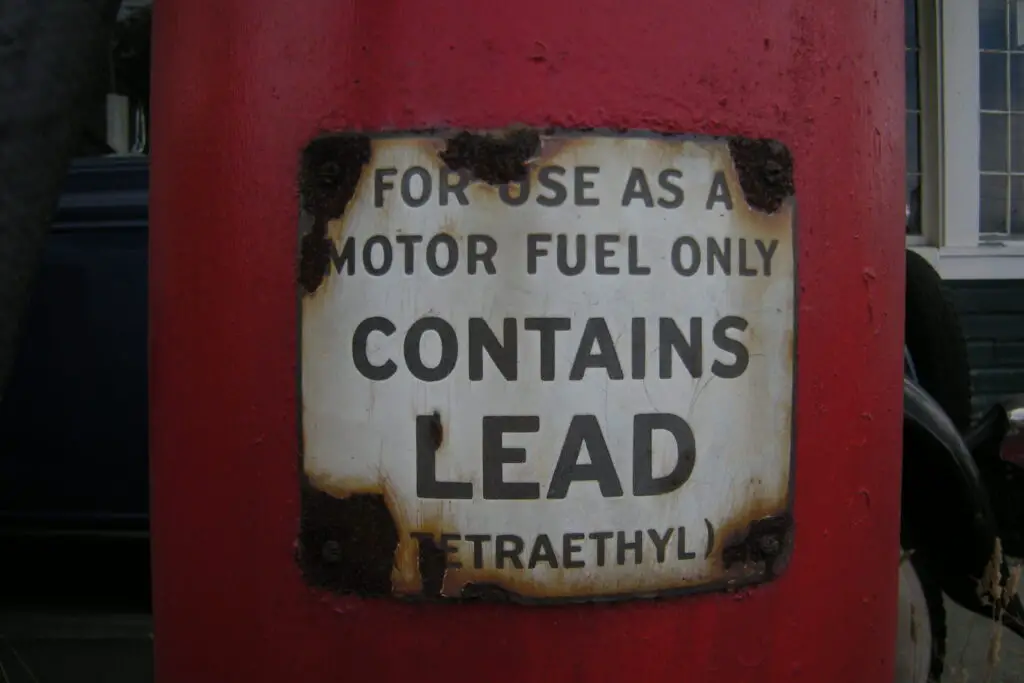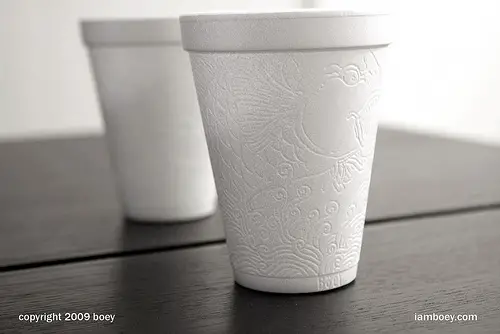1. Lead Paint

Lead-based paint was once a staple in homes and buildings for its durability and vibrant colors. However, over time, it was discovered that lead exposure could cause serious health issues, particularly in children. Chronic exposure to lead can result in developmental delays, cognitive impairments, and various neurological problems. It wasn’t until the 1970s that its dangers became widely recognized, leading to the eventual ban of lead-based paint for residential use.
Today, lead paint is considered a major environmental hazard, and any home built before 1978 is often tested for lead content before renovations. In fact, lead poisoning remains a risk in older buildings that haven’t been properly maintained or renovated. For this reason, any old furniture or painted surfaces that may still contain lead should be handled with care, especially if they are chipping or deteriorating.
2. Mercury Thermometers

Before the digital age, mercury thermometers were a common sight in medicine cabinets across the country. The shiny, silver liquid inside these glass tubes was what made them so effective in accurately measuring body temperature. But mercury is highly toxic, and exposure can lead to serious health problems, including damage to the kidneys, nervous system, and respiratory system.
Over time, the dangers of mercury were revealed, particularly in the event of a broken thermometer. A single spill could release toxic vapors into the air, which can be hazardous, especially in closed environments. As a result, mercury thermometers have been largely replaced by safer, mercury-free alternatives in homes and healthcare settings.
3. Vinyl Flooring

In the mid-20th century, vinyl flooring became a popular choice due to its affordability, ease of installation, and wide range of design options. It was seen as a modern and durable solution for everything from kitchens to bathrooms. However, vinyl flooring often contained phthalates, chemicals used to make it more flexible. These phthalates are now known to be endocrine disruptors, potentially leading to hormone imbalances and reproductive issues.
As the harmful effects of these chemicals became apparent, many manufacturers began phasing out phthalates in their products. Today, vinyl flooring is still common but has come under scrutiny for its environmental impact and potential health risks. If you have older vinyl flooring in your home, it’s a good idea to consider replacing it with safer, more eco-friendly options.
4. Asbestos Insulation

Asbestos was once hailed as a miracle material due to its fire-resistant properties, making it an essential component in building insulation. It was commonly used in everything from pipes to walls and ceilings, especially in the mid-20th century. Unfortunately, asbestos fibers, when disturbed, can be inhaled into the lungs, where they can cause serious respiratory diseases like asbestosis and lung cancer.
By the late 20th century, the dangers of asbestos became clear, leading to widespread bans on its use in many countries. If your home was built before the 1980s, there’s a chance it might contain asbestos in places like insulation or tiles. Proper handling and professional removal are crucial if you suspect its presence in older buildings.
5. Gas Lamps

Before electricity was commonplace, gas lamps illuminated homes and streets across the country. While they were an essential part of daily life, gas lamps were also a significant fire hazard. The open flame of the gas lamp, combined with the flammable gases used, posed a constant risk of fire, especially in urban areas.
With the advent of electric lighting, gas lamps were gradually phased out in favor of safer, more efficient options. Today, while they may be a charming feature in historical districts or preserved homes, gas lamps are largely viewed as dangerous relics. Modern gas lighting, if not properly maintained, can still pose risks of leaks or fires, so proper care is essential.
6. Leaded Gasoline

Leaded gasoline was a significant part of the automotive industry for much of the 20th century. The addition of lead to fuel helped increase engine performance by boosting octane levels. However, over time, it became clear that leaded gasoline was a major source of environmental pollution and a contributor to health issues. Lead exposure, particularly in children, can cause developmental delays, cognitive issues, and behavioral problems.
By the late 20th century, many countries began to phase out leaded gasoline, with the United States officially banning its use in 1996. Despite this, the environmental damage caused by leaded gasoline persists, with contamination still present in older vehicles and certain urban areas. Fortunately, unleaded gasoline has become the standard, greatly reducing the harmful effects of automotive emissions.
7. Radium Watches

Radium was once widely used in watch dials to make them glow in the dark. The radioactive properties of radium made it ideal for this purpose, allowing for luminous watches without the need for an external light source. However, the workers who applied radium to watch dials, known as “Radium Girls,” suffered severe health effects due to radiation exposure. Over time, it was discovered that prolonged contact with radium could cause bone cancer, anemia, and other radiation-related diseases.
The practice of using radium in watches was halted by the late 1960s, but the legacy of these glowing timepieces remains. Antique radium watches are considered hazardous, especially if they are damaged, as the radium can be released into the air. Collectors of vintage timepieces are advised to handle such items with extreme care, and modern alternatives to radium-based luminescence have long been adopted.
8. Polystyrene Foam Cups

Polystyrene foam cups, commonly known as Styrofoam cups, were a popular choice for disposable drinkware for decades. They were lightweight, inexpensive, and great for keeping drinks cold. However, the environmental impact of Styrofoam is severe. It is not biodegradable and can linger in landfills for hundreds of years, contributing to plastic pollution.
In addition to the environmental concerns, Styrofoam has been linked to potential health risks due to the chemicals it leaches into food and drink. As a result, many cities and states have passed legislation banning the use of Styrofoam products in favor of more sustainable alternatives. The push to eliminate Styrofoam from everyday use has led to the development of biodegradable, eco-friendly packaging solutions that are both safer and more environmentally responsible.
